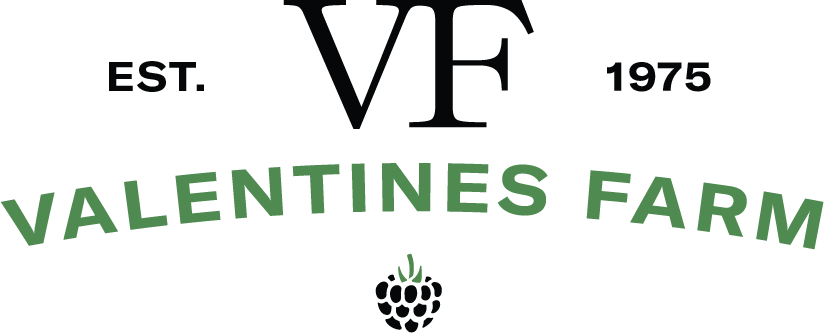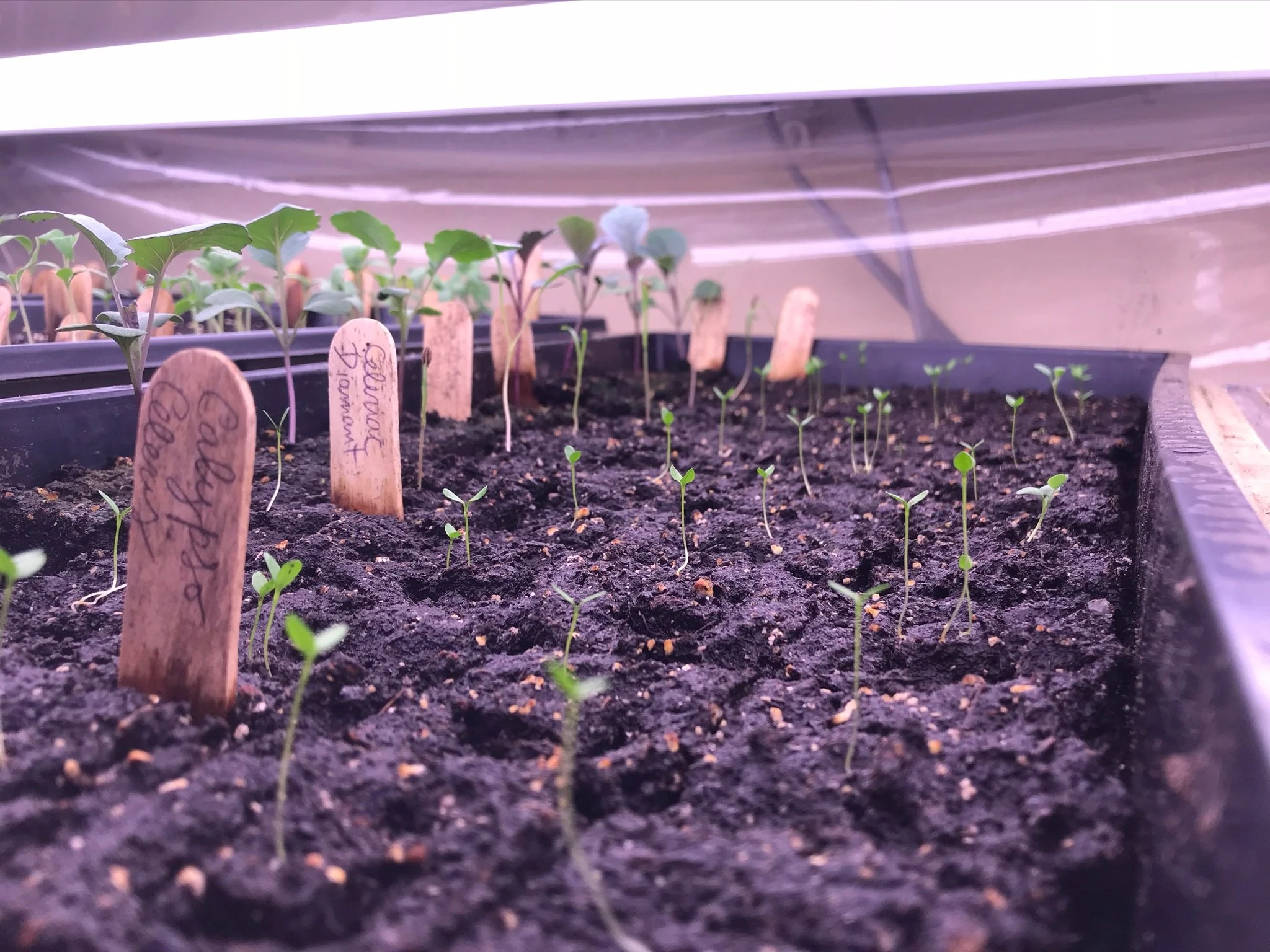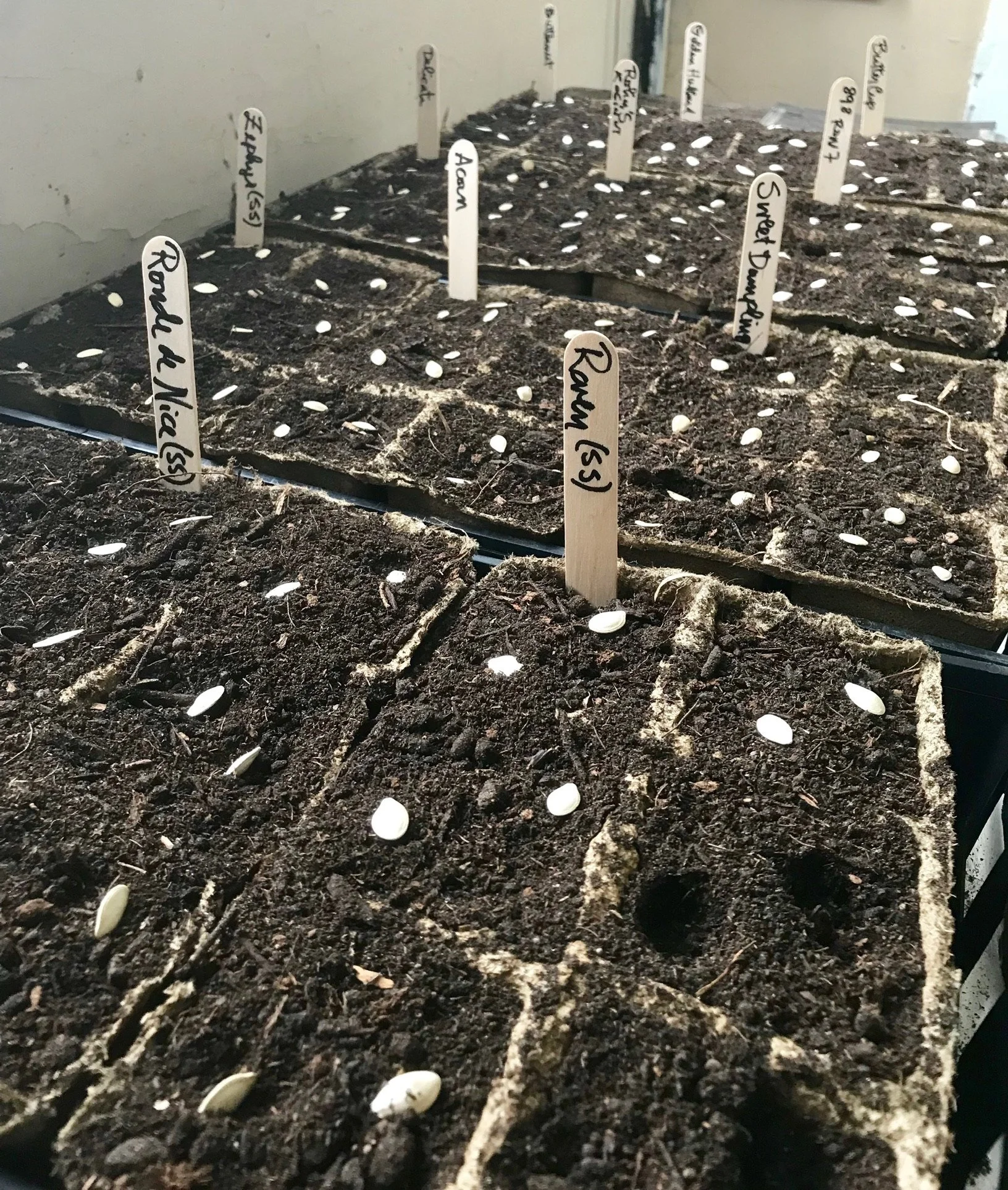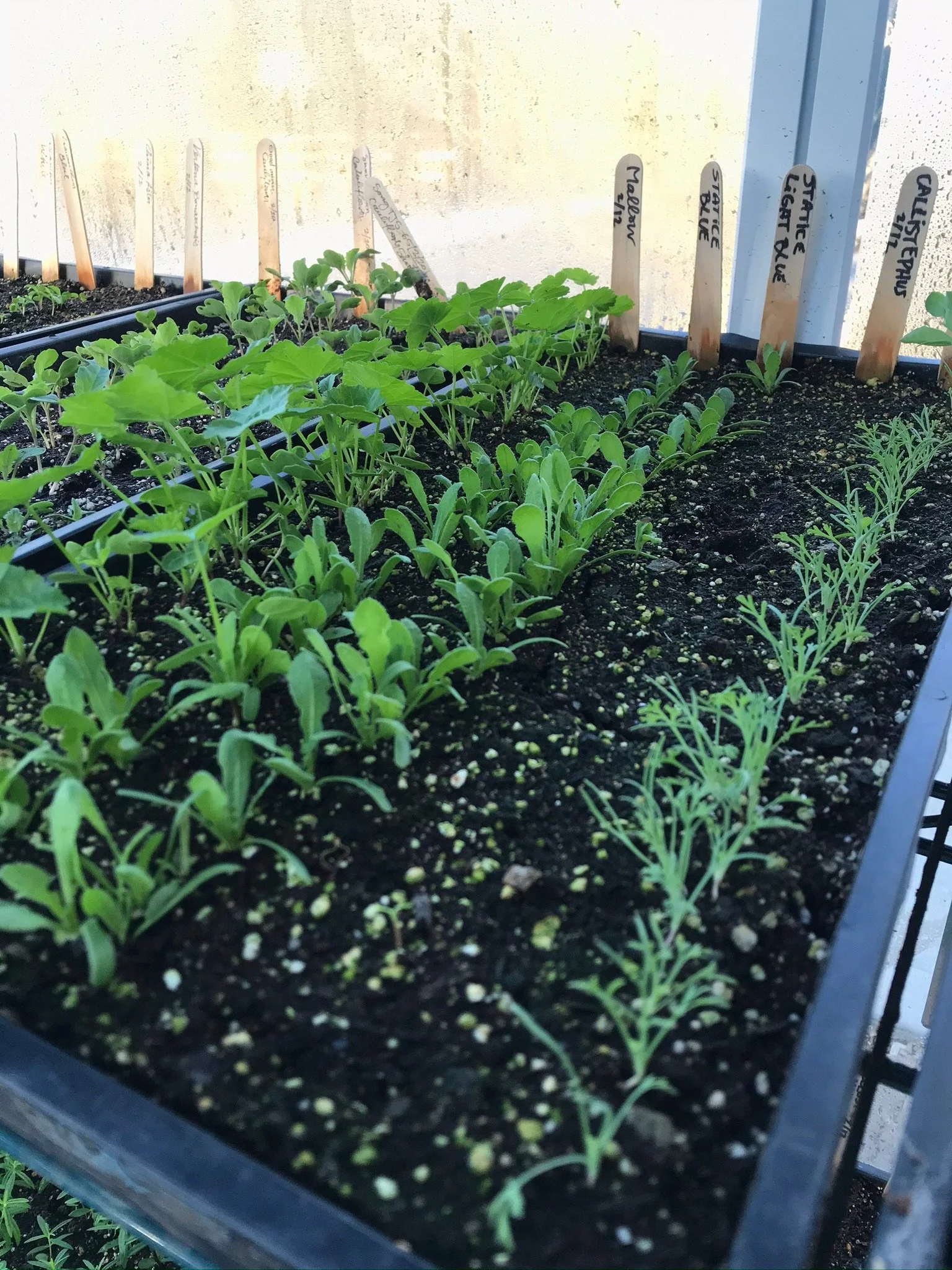How to Start a Backyard Garden: Seeding & Planting
Now that you’ve prepared your fall plot thanks to Part 1 of our Backyard Gardening series, let’s talk more about seeds!
Some seeds are quick to germinate, easy to grow, reliable and steady. Others are slow to grow, require precise temperatures, specific amounts of light, and still have low success rates. Other plants don’t reproduce from seeds at all, like rhizomes, tubers, and bulbs to name a few.
Choosing what you want to grow and how you want to grow it is important when considering your own garden - and it’s never too early to start planning. Keep reading to learn more!
In Part 1 of this series, you learned how to plan and prepare a small garden plot in the fall.
In Part 2, in this part, we’ll explain the basics of choosing seeds, plants, and planting.
In Part 3 (this part!), we will share our tips on nurturing your plants and harvesting.
In Part 4, we’ll show you how you can extend your veg season with fall sowings and simple frost protection.
Seeding and Planting in 5 Simple Steps
Decoding Seed Packets
Recommended Seeds to Start With
How and When to Plant
Tips for Planting Success
Bonus! Biodynamic Planting Calendar
Decoding Seed Packets
Hybrid plants / seeds (F1): Often spotted on seed packets or starter plants for the garden but can also be found in your grocery story on common trademarked fruits and veggies like the Honey Crisp apple or the Sun Gold tomato. Hybridization or cross pollination can happen in nature but most often occurs in a lab to choose desirable traits from two cultivars of the same plant. These new cultivars could occur naturally in nature and do not undergo any genetic modification to create hybrids. The seeds that hybrid plants produce will not grow to be like the parent plant. Hybrid varieties need to be purchased year after year if you wish to grow the hybrid you like.
Open-pollinated seeds: These seeds are formed from flowers that are fertilized by native pollinators like bees, flies, moths, birds, bats, or even wind or rain. Some plants even self pollinate without the help of another cause! These seeds are genetically diverse and may yield unique traits . Choosing to save seeds from the best plants year after year is called plant selection and is a practice that humans have been doing for thousands of years.
Heirloom: As the name suggests, heirloom seeds, like heirloom jewelry, are seeds that have been passed down through generations for their desirable traits. These seeds often carry beautiful stories and add to their charm. All heirloom seeds are open pollinated but not all open pollinated seeds are heirloom!
Days to Maturity: For leafy greens and herbs, this can be understood as the days to harvest. For flowering and fruiting plants though, this date signifies when the plant will begin to set flowers to start the fruiting process. This can be tricky sometimes when planning if you believe a mature plant means ripe fruit!
Disease Resistance: Disease resistance refers to natural characteristics of certain plants and varieties to fend off common diseases, often molds, mildews, and fungus. If you know that you are in an especially damp / wet area, these resistances become more important for you to look out for. It’s especially helpful to try a couple varieties of the same plant to see what does best in your area - so start with just one packet of two or three varieties as opposed to trying all one variety to start!
Hardy / Tolerant: Certain varieties even within the same plant family can be more or less tolerant to temperature changes. If you know that your place is more susceptible to cold snaps or heat waves, choose the variety best suited for you!
Know your Zone: Check out this planting zone resource so you know what plants and seeds to look out for.
Planting Depth: See below in the How To section!
Plant Spacing: Take note of this measurement to know how far apart to space your seeds. Plants need room to grow! Roots, foliage, flowers, and fruit all are sensitive to airflow, sunlight, amount of water, etc., so make sure to plant accordingly and not pack your plants too tight. It can be tempting to try to make the most of your space, but you won’t be sorry when your plants are thriving!
Recommended Seeds to Start With
Herbs like parsley, basil, chives, mint are great in pots
Alliums like spring onions and leeks can be started in pots, then thinned and transplanted
Veggies like radishes and zucchini, seed directly in the soil
Greens like kale, lettuce, great to start in pots and transplants
Flowers like nasturtium, calendula, chamomile, seed directly in the soil
How and When To Plant
We’d recommend sourcing organic transplants / starter plants from a local garden center or farm. Bigger plants like winter squash, tomatoes, cucumbers, eggplants, and peppers, and hardy herbs and flowers like lavender, rosemary, and thyme are better to purchase when they’re established for beginning gardeners.
If you’re low on indoor space, sunny windowsills, or gardening tools and equipment like seeding trays / plugs and soil,, you can grow your whole garden from transplants! It’s a great way to kick start the season and support a local shop!
The general rule of thumb is to wait until 2-4 weeks after the last spring frost for planting cool winter crops like lettuces, greens, some herbs, and radishes to name a few. For warm-weather crops like tomatoes, peppers, and eggplant, you’ll want to wait until the soil and air are consistently above 50*F - they do not love the chill before they’re well-established! In our region, using Memorial Day as a guide can be helpful for the summer plants, especially if you’re starting from transplants.
When planting seeds be mindful of the depth stated on the package and keep moist but do not over water / drown the seeds. It’s tempting to think more is more, but it’s not in this case! A rule of thumb is to plant seeds double their diameter - smaller seeds will be planted closer to the top of the soil.
A note for bulbs and garlic, these are planted in late fall to overwinter and grow in the spring / summer! There aren’t many late-season crops for home gardeners but these are a couple special ones!
Tips for Planting Success
Enjoy the process! Mindfulness and intention are incredibly important to gardening, it should be a fun and relaxing, fulfilling experience that brings you joy and nourishing. Take care and pay attention to the amazing steps you’ve taken to grow your own food!
Be mindful of pests! Squirrels and chipmunks love to dig up seeds, especially from cucurbits like squash, pumpkin, and zucchini. If you think this will be a problem, try transplants and plant cages to keep them away as best you can!
Drainage is important to think about when planting. Make sure your seeds and transplants are in pots or soil with good drainage so that water doesn’t stagnate and cause rot or bacterial issues.
Bonus: Planting Calendar
The Biodynamic Planting Calendar, created from the work of Maria Thun, divides each day of the year into root, leaf, flower, or fruit days, and additionally marks days when gardening or plant work isn’t ideal. This is and addition to your gardening practices and is a tool and guideline to support your work with the land but by no means is a hard and fast rule. Weather, life, and other circumstances surely get in the way of following along perfectly but it can make a big difference to the overall success of your plants if you choose to work alongside a calendar.
We hope the second part of this series is supportive of your upcoming garden! Make sure to share your progress as you plan, prepare, and plant your backyard gardens with #VFBackyardGarden. Stay tuned for Part 3 next month where we’ll dig into nurturing the plants once you’ve planted them, deterring pests, and some harvesting tips for when your hard work pays off!





